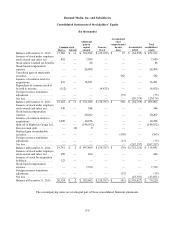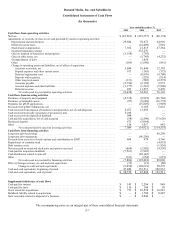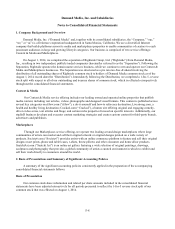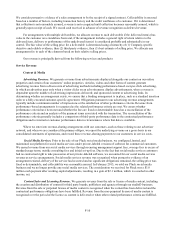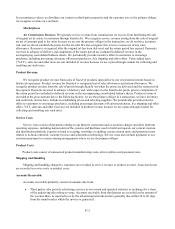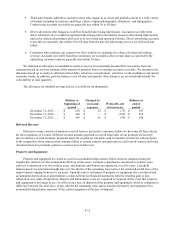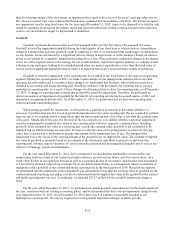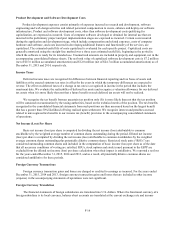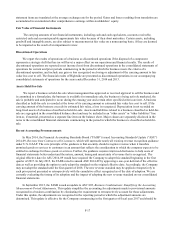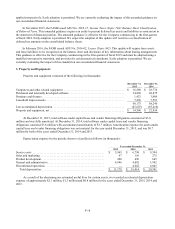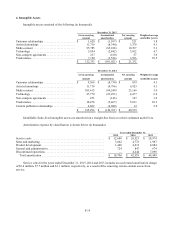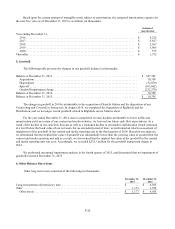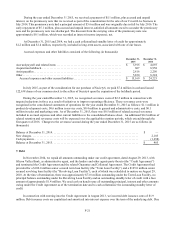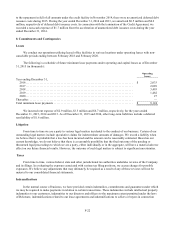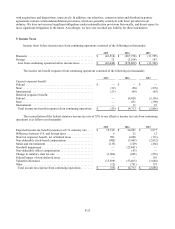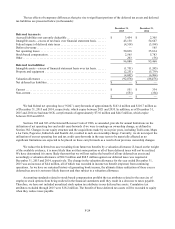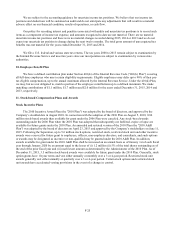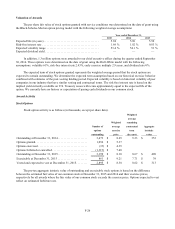Enom 2015 Annual Report Download - page 80
Download and view the complete annual report
Please find page 80 of the 2015 Enom annual report below. You can navigate through the pages in the report by either clicking on the pages listed below, or by using the keyword search tool below to find specific information within the annual report.F-16
Product Development and Software Development Costs
Product development expenses consist primarily of expenses incurred in research and development, software
engineering and web design activities and related personnel compensation to create, enhance and deploy our software
infrastructure. Product and software development costs, other than software development costs qualifying for
capitalization, are expensed as incurred. Costs of computer software developed or obtained for internal use that are
incurred in the preliminary project and post implementation stages are expensed as incurred. Certain costs incurred
during the application and development stage, which include compensation and related expenses, costs of computer
hardware and software, and costs incurred in developing additional features and functionality of the services, are
capitalized. The estimated useful life of costs capitalized is evaluated for each specific project. Capitalized costs are
generally amortized using the straight-line method over a three year estimated useful life, beginning in the period in
which the software is ready for its intended use. Unamortized amounts are included in property and equipment, net in the
accompanying consolidated balance sheets. The net book value of capitalized software development costs is $7.2 million
(net of $15.6 million accumulated amortization) and $12.0 million (net of $24.7 million accumulated amortization) as of
December 31, 2015 and 2014, respectively.
Income Taxes
Deferred income taxes are recognized for differences between financial reporting and tax bases of assets and
liabilities at the enacted statutory tax rates in effect for the years in which the temporary differences are expected to
reverse. The effect on deferred taxes of a change in tax rates is recognized in income in the period that includes the
enactment date. We evaluate the realizability of deferred tax assets and recognize a valuation allowance for our deferred
tax assets when it is more likely than not that a future benefit on such deferred tax assets will not be realized.
We recognize the tax benefit from an uncertain tax position only if it is more likely than not that the tax position
will be sustained on examination by the taxing authorities, based on the technical merits of the position. The tax benefits
recognized in the consolidated financial statements from such positions are then measured based on the largest benefit
that has a greater than 50% likelihood of being realized upon settlement. We recognize interest and penalties accrued
related to unrecognized tax benefits in our income tax (benefit) provision in the accompanying consolidated statements
of operations.
Net Income (Loss) Per Share
Basic net income (loss) per share is computed by dividing the net income (loss) attributable to common
stockholders by the weighted average number of common shares outstanding during the period. Diluted net income
(loss) per share is computed by dividing the net income (loss) attributable to common stockholders by the weighted
average common shares outstanding plus potentially dilutive common shares. Restricted stock units (“RSUs”) are
considered outstanding common shares and included in the computation of basic income (loss) per share as of the date
that all necessary conditions of vesting are satisfied. RSUs, stock options and stock issued pursuant to the ESPP are
excluded from the diluted net income (loss) per share calculation when their impact is antidilutive. We reported a net loss
for the years ended December 31, 2015, 2014 and 2013, and as a result, all potentially dilutive common shares are
considered antidilutive for these periods.
Foreign Currency Transactions
Foreign currency transaction gains and losses are charged or credited to earnings as incurred. For the years ended
December 31, 2015, 2014 and 2013, foreign currency transaction gains and losses that are included in other income
(expense) in the accompanying statements of operations were not significant.
Foreign Currency Translation
The financial statements of foreign subsidiaries are translated into U.S. dollars. Where the functional currency of a
foreign subsidiary is its local currency, balance sheet accounts are translated at the current exchange rate and income


